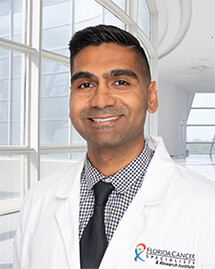Author(s): Ingo K. Mellinghoff, M.D., Martin J. van den Bent, M.D., Deborah T. Blumenthal, M.D., Mehdi Touat, M.D., Katherine B. Peters, M.D., Jennifer Clarke, M.D., M.P.H., Joe Mendez, M.D., Shlomit Yust-Katz, M.D., Liam Welsh, M.D., Ph.D., Warren P. Mason, M.D., François Ducray, M.D., Yoshie Umemura, M.D., Burt Nabors, M.D., Matthias Holdhoff, M.D., Andreas F. Hottinger, M.D., Ph.D., Yoshiki Arakawa, M.D., Juan M. Sepulveda, M.D., Wolfgang Wick, M.D., Riccardo Soffietti, M.D., James R. Perry, M.D., Pierre Giglio, M.D., Macarena de la Fuente, M.D., Elizabeth A. Maher, M.D., Steven Schoenfeld, M.S., Dan Zhao, Ph.D., Shuchi S. Pandya, M.D., Lori Steelman, M.S., Islam Hassan, M.D., Patrick Y. Wen, M.D., and Timothy F. Cloughesy, M.D.
Author Affiliations
From Memorial Sloan Kettering Cancer Center, New York (I.K.M.); the Brain Tumor Center, Erasmus MC Cancer Institute, Rotterdam, the Netherlands (M.J.B.); Tel Aviv Medical Center, Tel Aviv University, Tel Aviv (D.T.B., S.Y.-K.), and the Davidoff Cancer Center, Rabin Medical Center, Petah Tikva (S.Y.-K.) — both in Israel; Sorbonne Université, Institut du Cerveau, Assistance Publique–Hôpitaux de Paris, Hôpitaux Universitaires la Pitié Salpêtrière–Charles Foix, Paris (M.T.), and Hôpital Neurologique Pierre Wertheimer, Hospices Civils de Lyon, Centre de Recherche en Cancérologie de Lyon, Lyon (F.D.) — both in France; Duke University Medical Center, Durham, NC (K.B.P.); the University of California, San Francisco, San Francisco (J.C.); Huntsman Cancer Institute, University of Utah, Salt Lake City (J.M.); the Royal Marsden Hospital, London (L.W.); Princess Margaret Cancer Centre (W.P.M.), and Sunnybrook Health Sciences Centre (J.R.P.), University of Toronto (W.P.M.) — both in Toronto; the University of Michigan Comprehensive Cancer Center, Ann Arbor (Y.U.); the University of Alabama at Birmingham, Birmingham (B.N.); Sidney Kimmel Comprehensive Cancer Center, Johns Hopkins University School of Medicine, Baltimore (M.H.); Lundin Family Brain Tumor Research Center, University Hospital of Lausanne, and the University of Lausanne — both in Lausanne, Switzerland (A.F.H.); Kyoto University Graduate School of Medicine, Kyoto, Japan (Y.A.); Hospital Universitario 12 de Octubre, Madrid (J.M.S.); Universitätsklinikum Heidelberg and the German Cancer Research Center — both in Heidelberg, Germany (W.W.); the University of Turin, Turin, Italy (R.S.); Ohio State University Wexner Medical Center, Columbus (P.G.); Sylvester Comprehensive Cancer Center and the Department of Neurology, University of Miami, Miami (M.F.); University of Texas Southwestern Medical Center, Dallas (E.A.M.); Servier Pharmaceuticals (S.S., D.Z., S.S.P., L.S., I.H.) and Dana–Farber Cancer Institute (P.Y.W.) — both in Boston; and the University of California, Los Angeles, Los Angeles (T.F.C.).
